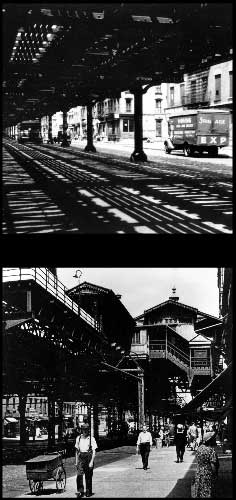

The impact of elevated trains upon the neighborhood was enormous, with sunlight blocked from the streets below and noisy trains passing by the windows of tenements. Soot from the steam engines collected on adjacent buildings and cinders and oil fell on pedestrians. These hazards were reduced after the elevated lines were electrified in 1902 to 1903. The elevated lines offered mobility to residents, who no longer had to live near their place of work and could move away from the gashouses and factories in Rose Hill and Kips Bay. The Third Avenue elevated also had a particular impact on Gramercy Park, bringing middle class residents into what had been a distinctly upper class neighborhood.
The growth of the subway system in the 1910s and 1920s led to a decrease in ridership of elevated lines and highlighted the negative impact they had upon neighborhoods. The Depression decreased the number of elevated passengers further and New York City began to eliminate the lines and dismantle the tracks in order to raise the value of adjacent real estate. The Second Avenue el was abandoned north of 57th Street on June 11, 1940, and south of 57th Street on June 13, 1942. The tracks were dismantled soon after.
The Third Avenue el made its last run on May 12, 1955. This was the last trip of an elevated line in Manhattan. Demolition of the tracks began later that year and was completed in October 1956. Because of